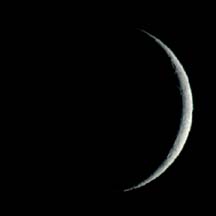SpicaABCD are four stars that are effectively one light source (they're very close in the sky, within a degree of eachother), E is the primary of spicaworld (the planet that the view is centred on).
In the views below, the camera is between SpicaABCD and Spicaworld, so we are looking at the hemisphere that is illuminated only by SpicaABCD. SpicaE is 180 degrees away, on the other side of the planet - so we are not seeing any light from E at all. In all cases, SpicaABCD are about 10,000 AU from the planet - but I'm changing the distance of the planet from E in each image. I'm using A as a reference magnitude for ABCD.
This image is with the planet at 20 AU from E. The appmag of E is -17.49, and the appmag of A is -17.07:

This image is with the planet at 10 AU from E. The appmag of E is -18.99, and the appmag of A is -17.06:

This image is with the planet at 5 AU from E. The appmag of E is -20.50, and the appmag of A is -17.06:

This image is with the planet at 2.5 AU from E. The appmag of E is -22.00, and the appmag of A is -17.06:

In all cases, Spica E is directly behind the planet (it'd be where the red diamond marker is if we could see it), so we're not seeing any of the light from there. But in all cases, the side that we can see - that is purely illuminated by ABCD - is getting dimmer as the planet gets closer to E, even though the apparent magnitude of A isn't changing.
(the fact that there's really four stars in ABCD there is irrelevant - they're not changing their positions relative to eachother in any of these images, and they're basically one light source that is a very similar magnitude to A alone. Either way, the illumination from these stars shouldn't be decreasing as the planet is moved into a closer orbit around E).
I know that the idea is to simulate the response of the human eye here, and that basically what we see on the darkside is all relative to the dayside illumination, but there's a problem here because we're not seeing the 'true' dayside at all in these images, and yet the 'illuminated darkside' is getting dimmer even though its brightness isn't changing.
There seems to be a 'standard light level' that all planets around any stars are illuminated by. What seems to be happening is that if there was just one star, then one side of the planet would get 100% of this light. If there's two stars, then each side gets a fraction of this 'standard light level' that is determined by the relative apparent magnitudes of each star. If the app mags are the same and we looked at in this case, then the illumination each side gets 50% of this 'light level'. You can see this in the images below.
In this image, Spica E is to the right and ABCD is to the left. Spicaworld is at 2.5 AU from Spica E. As you can see, the E-illuminated side is pretty bright.

In this image, Spica E is to the right and ABCD is to the left. Spicaworld is now at 20 AU from Spica E. As you can see, both sides are about equally illuminated, and the E-illuminated side is definitely dimmer than it was in the previous image when the planet was in a closer orbit to E.

What I think should be happening is that the phase of the planet relative to its Primary should be accounted for. As less of the bright primary-illuminated side is visible as you rotate around the planet relative to the stars in the system, the companion-illuminated side should become brighter. In the first four images I posted, the companion-illuminated side that we are looking at should be as bright as the primary-illuminated side, since our eyes are not being forced to account for another brighter light source.
So basically, when determining how brightly a planet is illuminated by stars in a multiple system, we need to include a factor that accounts for the phase angle of the planet that you are looking at. This is currently missing, so we're getting nonsensical results like what I show in the first four images.

